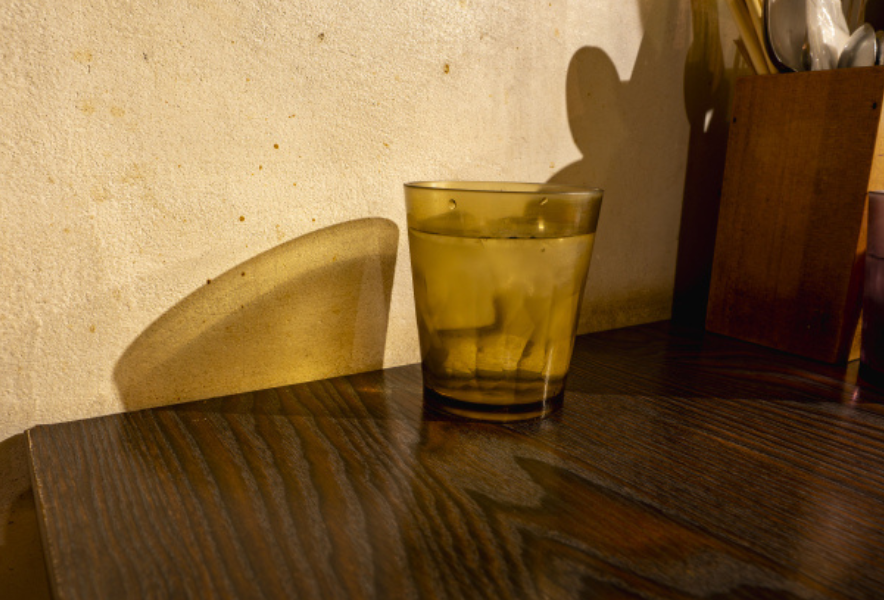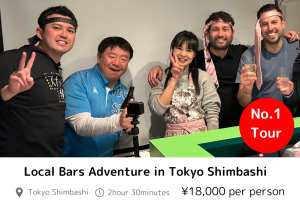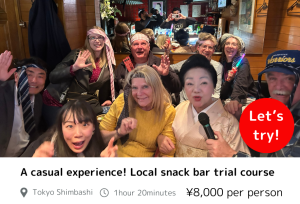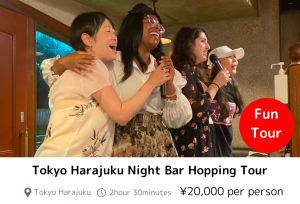Japan is full of delightful surprises for first-time visitors, and dining out is no exception. While every culture has its own etiquette and customs when it comes to food, Japan’s restaurant scene is particularly fascinating—full of unexpected, thoughtful, and sometimes quirky details that can leave a lasting impression. In this 2025 edition, we highlight four uniquely Japanese dining experiences you might encounter when eating out. And yes, let’s start with the most surprising one: the water is free!
Contents
Water is Free (and Often Comes with Tea!)
In many countries, ordering water at a restaurant might add a little something to your bill. But in Japan, you’ll almost never be charged for water. In fact, the moment you sit down, a glass of water—or sometimes hot or cold tea—will be served automatically and free of charge. No need to ask. Refills? Also free. This simple act reflects the Japanese spirit of hospitality: ensuring customers feel comfortable and welcomed, even before they order anything.
Especially in summer, cold barley tea (“mugicha”) is a common welcome drink, while in winter, many places serve warm green tea instead. Some casual eateries even place pitchers of water or tea at your table so you can help yourself. It’s a small gesture, but one that feels uniquely kind—and distinctly Japanese.
Fake Food Displays and Picture-Perfect Menus
One of the most iconic features of Japanese dining is the plastic food display, called sampuru (a Japanese rendering of the word “sample”). You’ll find these incredibly realistic models in restaurant windows or near the entrance, giving a perfect visual representation of what’s on the menu. They’re so detailed and lifelike that you might mistake them for the real thing!
Menus often include full-color photos of each dish too, making it easy even for those who don’t speak Japanese to order confidently. Combined with friendly gestures from staff and the occasional English menu, it’s clear that Japan puts a lot of thought into making dining accessible for all.
Solo Dining is Totally Normal
In some cultures, eating alone at a restaurant may feel awkward—but not in Japan. Whether it’s a busy businessperson grabbing lunch, a student enjoying a quiet dinner, or a tourist savoring ramen at a counter seat, solo dining is perfectly accepted and even encouraged.
Many restaurants are set up with individual seating options: counter spaces, single booths, and even “solo dining cubicles” in some popular chains. This culture of comfortable solitude allows people to enjoy their meal without pressure or self-consciousness. It also reflects the deeply rooted cultural value of giving others space and privacy, even in public.
Quiet, Clean, and Considerate Spaces
Japanese restaurants—whether high-end or casual—tend to be remarkably quiet and clean. You won’t hear loud music or shouting across tables. People generally speak in lower voices, avoid talking on phones, and are mindful of not disturbing others. Cleanliness is also top priority: tables are promptly wiped, floors are spotless, and utensils are either disposable or sterilized.
This atmosphere makes dining a peaceful, almost meditative experience. It’s no wonder that even the busiest ramen shops or conveyor-belt sushi places feel relaxing. For visitors used to noisier or more chaotic dining environments, the calm of Japanese eateries can be refreshingly soothing.
A Final Note: From Free Water to the World of Snack Bars
Japan’s restaurant culture is a reflection of its values: hospitality, consideration, simplicity, and quality. Whether you’re sipping free tea at a family diner or enjoying a solo meal at a quiet noodle shop, the unspoken care behind each moment adds up to something special.
And once you’ve explored the world of cafes, izakayas, ramen stalls, and sushi counters, you might be ready to dive into something even more local: the snack bar. Often overlooked in typical tourist guides, snack bars offer a warm, homey, and interactive experience—where the “mama” (hostess) chats with guests, karaoke flows freely, and community forms over drinks and stories.
So next time you sit down to that complimentary cup of tea, remember—it’s more than just a drink. It’s the beginning of a uniquely Japanese experience. And maybe, just maybe, your night will end in a softly lit snack bar, singing your heart out with a tambourine in hand.
Let’s go to Izakaya and a Japanese Snack-bar with a fun guide!!
You can enjoy many kinds of drinks at Izakaya and drinking culture Snack Bars, beloved by many but you can’t enter without a guide. You can enjoy communication with the owner and other customers, as well as singing karaoke, allowing for a relaxing time.
Most snack bars have a policy of refusing entry to foreigners. However, with a tour, you’ll have a guide, so you can enter with peace of mind.
When visiting Japan, don’t just check off the tourist spots –
dive into local experiences for an unforgettable journey!
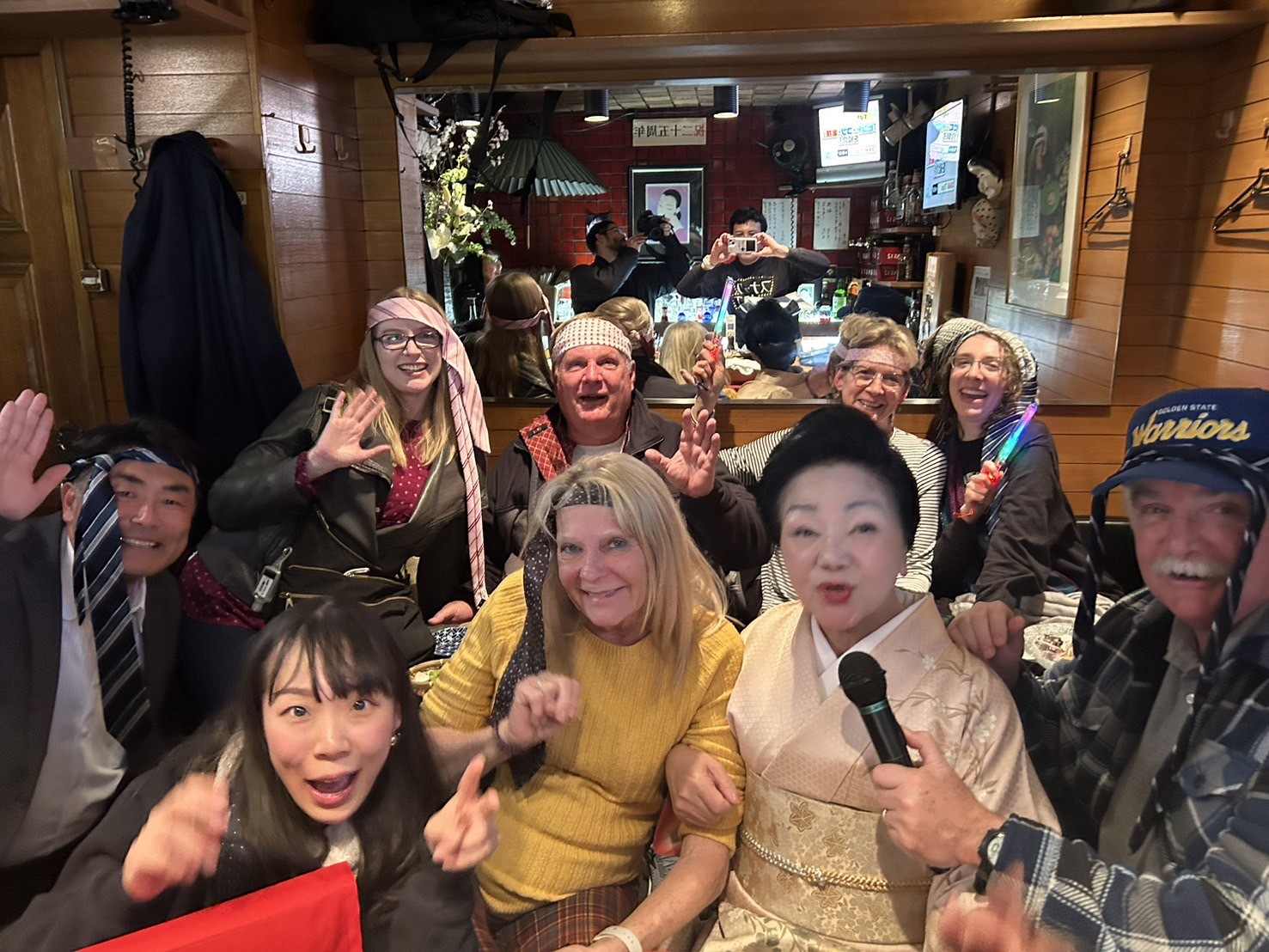
Once you experience it, you’ll be captivated too! The charm of snack bars.

New encounters with people! The camaraderie of singing at a snack bar! Conversations with the mama-san!

